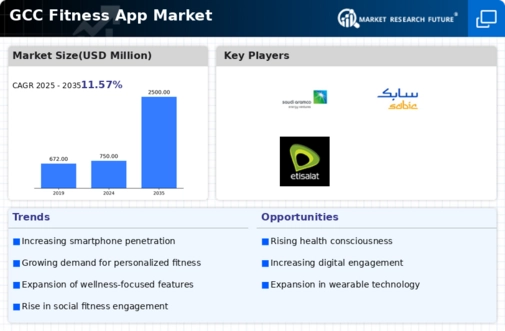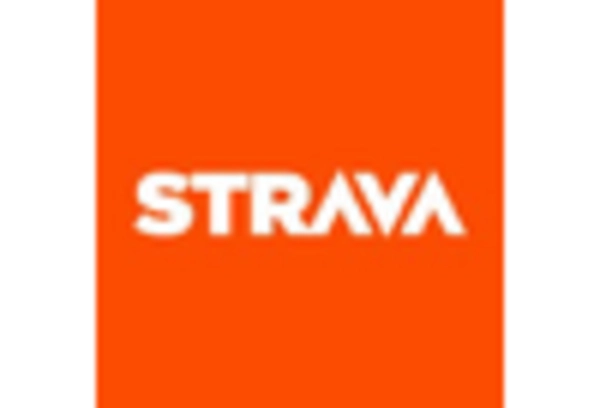Rising Health Awareness
The fitness app market is experiencing a notable surge in demand due to increasing health consciousness among individuals in the GCC. As lifestyle-related diseases become more prevalent, consumers are actively seeking solutions to improve their health and fitness. This trend is reflected in the growing number of fitness app downloads, which have reportedly increased by 30% in the last year alone. The fitness app market is thus positioned to benefit from this heightened awareness, as users turn to technology for guidance in achieving their health goals. Furthermore, government initiatives promoting healthy living and fitness are likely to bolster this trend, encouraging more individuals to adopt fitness apps as part of their daily routines.
Focus on Mental Well-being
There is a growing recognition of the importance of mental health alongside physical fitness, which is influencing the fitness app market. Many apps are now incorporating features that promote mental well-being, such as meditation guides, stress management tools, and mindfulness exercises. This holistic approach to health is resonating with users in the GCC, as they seek comprehensive solutions for their overall well-being. The fitness app market is adapting to this trend by offering diverse functionalities that cater to both physical and mental health needs. As awareness of mental health continues to rise, the demand for such integrated fitness solutions is expected to increase.
Technological Advancements
Technological innovations are playing a pivotal role in shaping the fitness app market. The integration of advanced features such as artificial intelligence, machine learning, and augmented reality is enhancing user experiences and engagement. For instance, apps that utilize AI can provide personalized workout plans and nutrition advice, catering to individual user needs. The fitness app market is witnessing a shift towards more interactive and immersive experiences, which could potentially attract a broader audience. Moreover, the proliferation of smartphones and high-speed internet access in the GCC is facilitating the adoption of these advanced technologies, making fitness apps more accessible and appealing to users.
Corporate Wellness Programs
The implementation of corporate wellness programs in the GCC is emerging as a significant driver for the fitness app market. Companies are increasingly recognizing the benefits of promoting employee health and well-being, leading to the adoption of fitness apps as part of their wellness initiatives. These programs often include incentives for employees to engage with fitness apps, thereby fostering a culture of health within organizations. The fitness app market stands to gain from this trend, as more businesses invest in tools that encourage physical activity and healthy habits among their workforce. This shift not only enhances employee productivity but also contributes to the overall growth of the fitness app market.
Increased Smartphone Penetration
The rapid increase in smartphone penetration across the GCC is significantly impacting the fitness app market. With over 90% of the population owning smartphones, the accessibility of fitness apps has never been greater. This widespread adoption allows users to conveniently track their fitness journeys, access workout plans, and engage with health communities. The fitness app market is likely to see continued growth as more individuals leverage their smartphones for health and fitness purposes. Additionally, the rise of affordable mobile data plans is enabling users to stay connected and utilize fitness apps without financial constraints, further driving market expansion.

















Leave a Comment